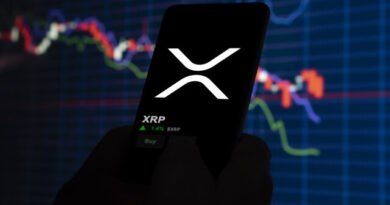Solana Vs. Ethereum: Sygnum Reveals Who Wins

Sygnum, the Swiss- and Singapore-regulated digital-asset banking group, has ignited fresh debate over the pecking order of smart-contract platforms with the publication of its 8 May “Digital Nugget” commentary, pointedly titled Is Solana overtaking Ethereum?
Solana Vs. Ethereum
In the report, Sygnum’s research desk acknowledges that Ethereum retains an “undisputed” lead in revenues and institutional adoption, yet concludes that the market narrative has swung decisively in Solana’s favour—a reversal dramatic enough for the bank to describe Solana as the system currently “overtaking” its older rival in mind-share if not in absolute fundamentals.
“Ethereum’s strategic pivot […] has led to a 5–10 percent outperformance of Ether over Solana,” the note observes, citing the chain’s refocused roadmap on main-net scalability and user-experience. Nonetheless, the authors concede that “sentiment on Ethereum remains poor for now” despite its “continued leading position and still superior revenue generation.”
Sygnum’s analysts dissect the often-conflated metrics of fees, revenues and token value. While Solana has recently “dominated in fee generation,” its protocol income “continues to substantially lag Ethereum (with the exception of the brief period around the issuance of the Trump family tokens on Solana).” The bank quantifies the gap at roughly two- to two-and-a-half-times in favour of ETH—an edge that endures even after Solana’s frenetic surge in retail transaction volumes.
Layer-2 dynamics on Ethereum, long criticised for siphoning activity away from the main chain, receive a balanced treatment. The report reiterates that rollups have “led the market to see Ether as less valuable,” but adds a little-noticed parallel: “a comparable issue affecting the value of the Solana tokens is overlooked.” Because “most of the fees are paid to validators and do not grow the value of the Solana token,” Solana’s own monetary premium may be equally vulnerable.
Token-economic self-help is not on the immediate horizon: a community proposal to tweak Solana’s inflation schedule—an initiative Sygnum says “would have had a similar effect” to ETH’s fee-burn mechanic—“was conclusively voted down recently.”
Market capitalisation paints a different picture of runway. With Solana valued at roughly one-third of Ether but already generating half its revenues, Sygnum calculates “more room for Solana to outperform – especially with the tailwind of a better narrative and sentiment.” Even so, the report cautions that Solana’s income stream is “highly concentrated in the memecoin sector” and hence judged by investors as “less stable.” The implication: valuation discounts may be rational rather than sentimental.
By The Numbers
Ethereum’s entrenchment among regulated institutions provides the counter-weight. “Tokenisation, stablecoins, and DeFi” are the use-cases “showing traction and have the support of governments, regulators, and traditional financial institutions,” Sygnum writes, noting Ethereum’s 57% share of tokenised assets—augmented by a further 20% on its Layer-2 cohort zkSync. BlackRock’s flagship BUIDL fund, for example, keeps “93% of its assets on Ethereum,” a decision the asset manager links to the network’s “decentralization, credibility and security.”
By contrast, Solana’s slice of the tokenisation pie “remains below 3%,” and its year-to-date doubling of stablecoin share leaves it “just above 5%,” still an order of magnitude behind Ethereum. The area where Solana has moved the needle most convincingly is DeFi total value locked: its share has climbed from 9.5% to 11.5% against Ethereum’s slide from 63.5% to 55% since January.
“The narratives continue to strongly favour Solana,” Sygnum concedes, even after Ethereum Foundation’s internal reshuffle and public vow to “adjust its go-to-market strategy and to clarify and articulate the value proposition.” Yet narrative alone will not decide custody mandates or settlement rails for traditional finance.
“We do not yet see convincing signs that Solana would be the preferred choice as Ethereum’s security, stability and longevity are highly prized,” the bank concludes, reminding readers that network effects in crypto “are very hard to overcome – just as they are in other tech fields such as social media.”
Indeed, history’s roll-call of “Ethereum killers” is a cautionary tale: “most have faded away until now,” despite technological ingenuity. Against that backdrop, the report’s summary is both sober and striking: “Ethereum’s 2-year long underperformance vs Solana has been temporarily arrested since the strategic pivot… [and] the token value continues to be supported by revenues running at double the rate of Solana’s revenues.”
Sygnum’s analysis stops short of declaring an irreversible power shift, but its framing is unambiguous: in the current news cycle Solana enjoys the upper hand in perception, whereas ETH retains the upper hand in fundamentals. Whether that juxtaposition amounts to Solana “overtaking” Ethereum or merely drafting in its slipstream will depend, the bank says, on which chain wins the confidence of global finance in the “medium-term.”
For now, as Sygnum delicately puts it, “the market has focused on Solana’s greater transaction volumes,” even if “protocol revenues continue to substantially lag Ethereum.” In the scorecard of May 2025, Solana may claim the crowd, yet Ethereum still holds the belt.
At press time, ETH traded at $2,344.

Featured image created with DALL.E, chart from TradingView.com

Editorial Process for bitcoinist is centered on delivering thoroughly researched, accurate, and unbiased content. We uphold strict sourcing standards, and each page undergoes diligent review by our team of top technology experts and seasoned editors. This process ensures the integrity, relevance, and value of our content for our readers.




